Behind the Squatters
Oliva Leong
Many things and places are likely to be disappeared or being disappeared in this fast developing era, in which they are all memories that we treasure. For instance, the implementation of new city planning entails the reconstruction of the former map in Macao. Squatters and slums clearance is one of the visible examples of new city planning in the recent decade due to the land grant to contractors. On the other hand, it is no doubt that human friendliness is one of the invisible examples that is being disappeared in this modern life.
Squatters are houses made of iron or wood that were once occupied a large area in Macao. In spite of the replacements of apartments, there are a few squatters near the Ilha Verde, Red Market, Areia Preta and Patane in which some are vacant and some are still owned by people. Apart from the usage of living, people also use them for restaurant and car business.
Among the squatters in Macao, Ilha Verde was once the major area occuping numbers of squatters. The inhabitant includes the old and weak, learning disabled people, one parent family, unemployed people, or even wealthy people. Squatter area there was built due to the fire outbreak for the victims in 1950 and 1955. Nevertheless, it had confronted the clearance due to the carry out of public housing estates, in which some of the inhabitants can get into public housing estates while some of them cannot.
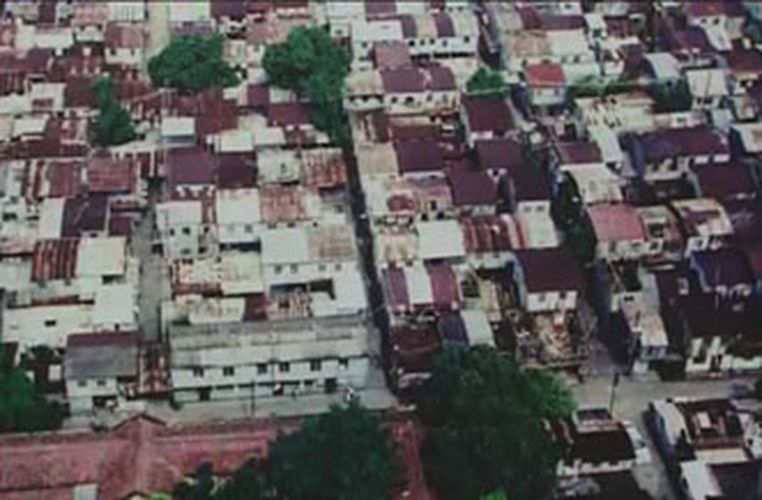
1950’s Ilha Verde Squatter area
For any sake, it is a fact that squatter area in Ilha Verde was already out of our sight. It became the memories of the inhabitant forever and it is believed that people’s grievance against the government will dilute as time passed. However, here comes a question: “will the remaining squatter and slum areas in Macao undergo the same experience as the Ilha Verde does?”
It is a cold and cheerless Sunday morning, in which shops are closed and people are resting. Nevertheless, I have decided to start my journey of adventure to search for something that is disappearing in Macao – remaining squatters in Macao. The first time of my journey is a few weeks ago. I drove and walked along street and alley that is possible to find the existing of squatters. In consequence, I have found a few squatters near the Ilha Verde, Red Market, AreiaPreta, Patane, Rua do Cunha, Edf. Tou Un and Coloane Downtown in which some are vacant and some are still owned by people. This time, I am going to search more about people who live in squatters through interviews.
The first place that I go along is the Ilha Verde. The land, which the original squatter areas stood erectly, has become the soil for an engineering project. Nearby, there are still some discarded squatters and I could easily find sign of “Government’s territory, occupation is forbidden”. After asking some inhabitants, they point me to one alley nearby in which I can see a squatter seems still occupied by someone. Unfortunately, there are some fences that I can’t get into it.
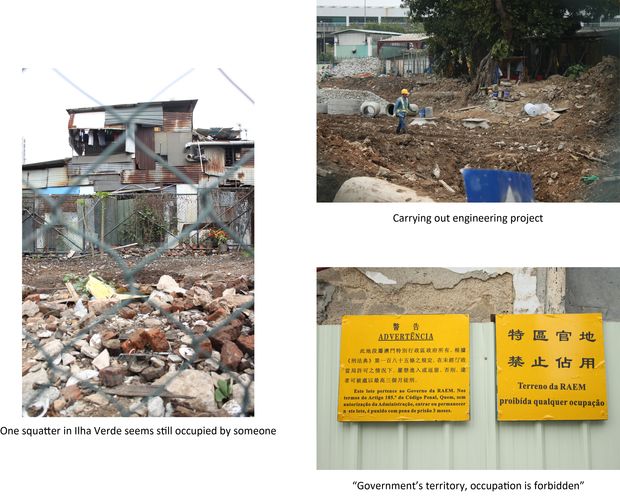
Then I go to the Coloane Downtown to search for some interviewees. Many inhabitants have resistance on having an interview. I walked along the path and finally reach “Ying Lee”, a squatter of a fish and seafood store. Mrs. Cheong, aged 65 years old, is the store keeper of “Ying Lee”. Her house is behind the store where she has been living for about 50 years. There are presently 7 people lived in this squatter.
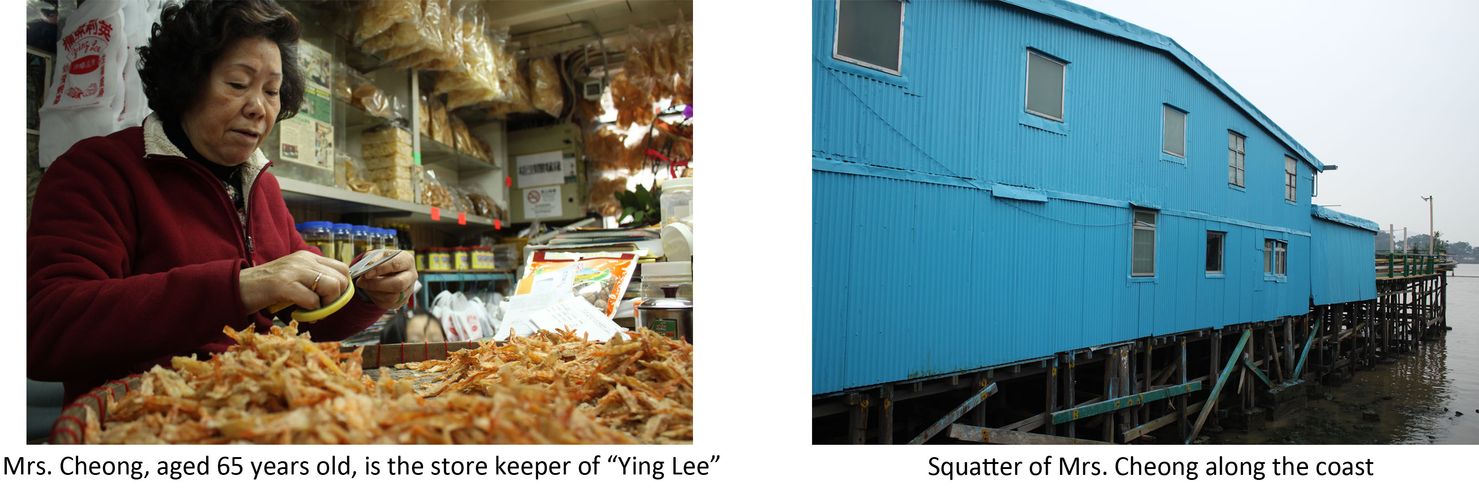
When I look into “Ying Lee”, it is hard to imagine if there is a typhoon. Typhoon and raining is the scariest thing to them which will lead to flooding and worn out of squatter. Every year they have to pack things for at least two times before the typhoon comes. In the year 2008, it was a disaster to them as their house was worn out and their television was out ordered as well. Even so, they still didn’t think of moving to the urban areas as they have already used to this place and environment.
Cheong mentioned that the land is belongs to the Macao government and they have to give tax to the government every year for occupying the place. The squatters were built by themselves and they have to keep repairing every year. ‘We cannot do anything if the government withdraws the land, yet at this moment I’m not too worry about it at all. It is because I was heard that the government wants to keep the characteristics of fishing here,’ said Cheong.
The last station that I go is Taipa as I am curious to get know about squatter areas in Macao, Taipa and Coloane. To my disappointment, people who live in Tou Un was out to work and the others who passed by are not inhabitants in Taipa. Edf. Tou Un is where the “Zhuo family village” (卓家村), where it is one of the squatter areas in Taipa which is private land.
Thus, I move to Rua do Cunha, a tourist scenic spots that is famous in Macao, where there are some remaining squatters nearby. Although it is a cold Sunday, it doesn’t reduce the number of tourists. It is a bustling place, yet those asides are where the squatters stand.
Walking along the squatter area, I found 3 men sitting in front of a squatter engaging in chitchat. They are all inhabitants of Taipa. After telling them my purpose to come, they are very nice to offer a seat for my interview. Among three of them, 2 of them have already moved to public housing estates. Both of them are called Mr. Ho as they are brothers. It was a coincidence that I see them meeting Mr. Chan, the owner of this squatter, who has been living in this squatter for 56 years. They start to talk about their story, which is one of the long and interesting stories that I have ever heard.
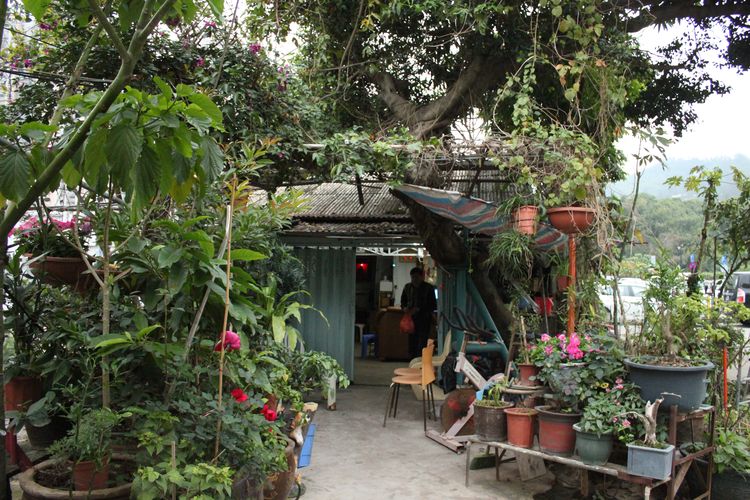
This is the squatter of Mr. Chan
Ho the elder, aged 58, has been living in squatters around Rua do Cunha until 5 years ago. According to them, the car park beside Rua do Cunha was also squatter area before. There are over a hundred squatters over here. In the past, they need to go to the city hall register for occupying a place for building their other house. The officers in the city hall will then find a place and measure the area of squatter for them. Each family has over 10 people living together.
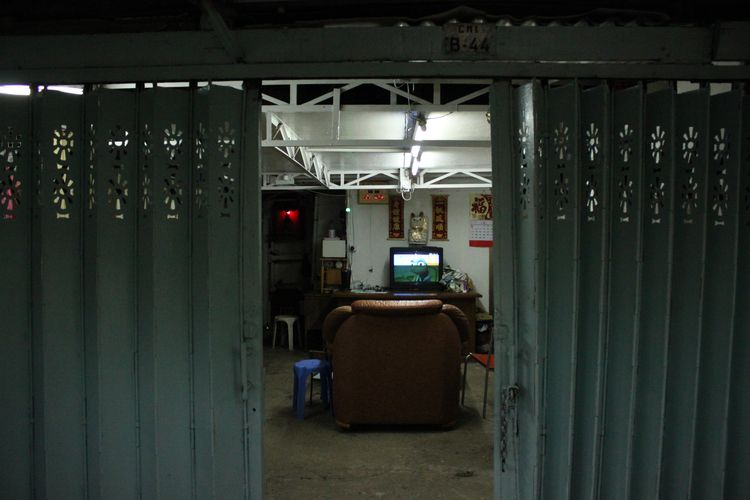
Inside the Mr. Chan’s squatter
‘Taipa is a quiet and peaceful place before the bridge was built in 1974 linking Macao and Taipa together. The public order is very good as they are all very poor and neighbors are known by each other,’ said Ho.
In common with the inhabitants in Coloane, they are scary of typhoon and raining. Flooding is a big problem to them. In the past when there is a typhoon, inhabitants would evacuate from their squatters to the city hall in Taipa, in which the Portuguese officers would go to squatters one by one to help the old and weak. Although such horror scenes happened, they can also feel the friendliness of the Portuguese and the cooperation of other inhabitants.
Instead of typhoon and raining, their scariest thing is the squatter getting on fire. According to Ho, each family have to make firecrackers to earn money as Taipa is the major place for making firecrackers and fireworks.
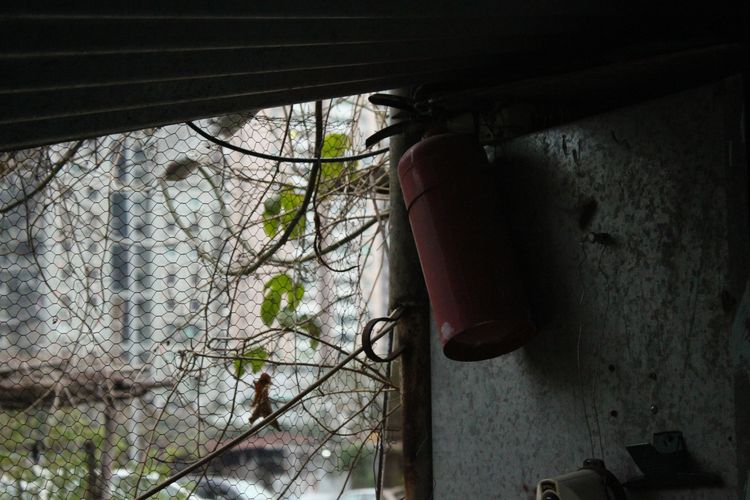
A fire extinguisher is kept in Mr. Chan’s house
‘We know it is the truth that the government will withdraw the place very soon since the land is belongs to them. Nevertheless, we only hope that they can plan better this time, not like the Ilha Verde’s,’ said Chan.
I have stay there for a long time and we finish the interview just before they have their dinner. In between, they have told me many of their experiences and memories in the past. After interviewed the inhabitants in Coloane and Taipa, I am sigh with emotion. People in the past were friends with their neighbors. They are very generous in giving others’ their hand. They lived peaceful with other inhabitants or even the Portuguese.
“Echoes of the rainbow” is a Hong Kong drama film directed by Alex Law in 2010, which won the Crystal Bear for the Best Film in the Children’s Jury "Generation Kplus" category at the 2010 Berlin Film Festival. It is a very touch story in which the main characters are also inhabitants live in squatters. The film shows how difficult their lives are; how they face the nature disasters; and how friendly and warmth they are when being with their neighbor. I think this story can totally express the living environment and friendliness of people in the past.
Time flies and not all the object and place can be remained. Disappeared and disappearing are facts that we cannot resist. While the only thermos that I found is friendliness of human.